Can He Come Back?
The president, having suffered defeat in the midterm elections, has just been defeated again, in the following year, by partisan opposition in Congress. So now, looking ahead to the next presidential election, his opponents—within the president’s party, in the opposition party, and in possible new parties—are lining up. Indeed, the insider pundits mostly agree: The president is a failure, and he is likely a one-termer.
The president I’m describing, of course, was Harry Truman. Oh, did you think I had someone else in mind?
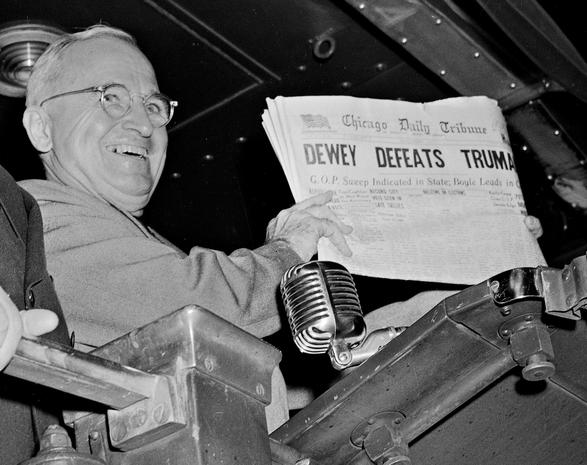
U.S. President Harry S. Truman holds up an Election Day edition of the Chicago Daily Tribune, which, based on early results, mistakenly announced “Dewey Defeats Truman” on November 4, 1948. The president told well-wishers at St. Louis’ Union Station, “That is one for the books!” (AP Photo/Byron Rollins)
Today, we can all read the hostile headlines and commentary on Donald Trump, and so there’s no need to review all that hostility here. However, the 2020 election is still nearly two years away, and we should remember this lesson from history: A lost battle is not the same as a lost war.
And the key to winning a war is to mobilize resources and pick the right fights—and to keep the effort going over a sustained period of time. That is, developing a consistent strategy and sticking with it, even in the face of adversity.
That’s what Truman did in 1948, and it paid off for him grandly. The man from Missouri had been an effective senator for a decade prior to being picked as President Franklin D. Roosevelt’s running mate in 1944, and yet even so, he had little relationship with FDR, who was focused, of course, on winning World War II.
Yet then, after having been a low-key vice president for just three months, Truman found himself thrust into the presidency when FDR died. With his characteristic Midwestern openness, he volunteered that he felt overwhelmed by his new duties. As he said to reporters the day after his sudden swearing in:
Boys, if you ever pray, pray for me now. I don’t know whether you fellows ever had a load of hay fall on you, but when they told me yesterday what had happened, I felt like the moon, the stars, and all the planets had fallen on me.
Once in the Oval Office, Truman did, in fact, have a rough time, lurching from crisis to crisis. Yes, of course, the U.S. triumphed in World War II, and yet few gave Truman any credit. Instead, his fate was to get the blame for the economic and social dislocations that occurred after the fighting was over.
Most notably, labor strikes surged; unions, which had been strongly discouraged from striking during the war, were now free to assert themselves.
All this unrest, and more, was laid at the feet of the 33rd president; the common joke back then was, “To err is Truman.” Then, in November 1946, the Democrats were shellacked in the midterm elections, losing both the House and the Senate. Looking ahead to 1948, most people thought, Truman will be the next to go.
Yet Truman himself was unbowed. As a combat veteran of World War I, and a scrappy survivor in political wars since, Truman was never one to shrink from a fight. Moreover, he was man enough to accept responsibility for whatever happened; he proudly kept a sign on his desk that read, “The buck stops here!”
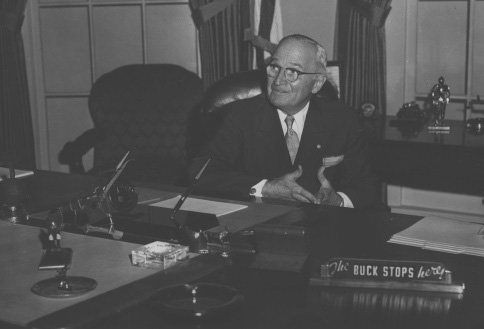
Former President Harry Truman sitting at the desk in a reproduction of the president’s office in the Harry S. Truman Library. ‘The Buck Stops Here’ sign is on the desk. (Harry S. Truman Library)
As 1946 segued into 1947, more challenges were to come; the embattled Democrat Party was embattled further, from both directions. On the left, Henry Wallace, a former vice president, was aiming to run as a third-party candidate; Wallace thought that Truman was being too tough on the Soviet Union. And on the right, Strom Thurmond, the governor of South Carolina, was aiming to run as a fourth-party candidate; Thurmond thought Truman was being too aggressive on civil rights.
Yet the big issue was labor, and the labor movement, which then represented a full one-third of the workforce. Strikes were becoming a hot issue back then, and in addition, the public had deep concerns about corruption within the unions, as well as communist penetration.
The flash point was legislation put forth by Sen. Robert Taft (R-OH) and Rep. Fred Hartley (R-NJ), repealing some parts of the 1935 National Labor Relations Act, the so-called “Magna Carta for labor.” As Taft said of his bill, it was in response to “an unquestioned public demand for labor legislation to end abuses which are apparent to the American people.” In response, the unions called Taft-Hartley a “slave-labor” bill. Thus the national dividing line was clear. “Which Side Are You On?” was more than a song, it was a political gut check.
So here’s where the possible parallels between Truman then and Trump today become most interesting. In his time, Truman chose to make his stand with labor unions. And in our time, Trump has chosen to make his stand with immigration hawks. The mega-question in 1948 could be summed up this way: Is Truman making the right choice on his signature issue? And the mega-question in 2020: Is Trump making the right choice on his signature issue?
As we shall see, Truman lost a big political battle in 1947, and yet he clawed his way back to win the electoral war in 1948. It wasn’t easy, of course, but then, in national politics, nothing is ever easy. So now, seven decades later, Team Trump could learn a lot from Team Truman.
The Truman Strategy
As a senator from a border state, Truman had carved out a mixed record on labor issues, and yet when he became president of the 48 states, he was far more supportive of labor. (Historians debate, to be sure, whether or not Truman had a sincere conversion on union issues, or whether he was simply eyeing the electoral votes of New York, Ohio, and Michigan.)
The Taft-Hartley legislation came to a vote on Capitol Hill in June 1947; it passed by wide margins. So now this was Truman’s moment of truth. Was he solid with labor, or not?
He was solid. On June 20, Truman issued his veto, declaring, “The bill taken as a whole would reverse the basic direction of our national labor policy.” And here we might pause over Truman’s choice of words, “basic direction” as that was, indeed, the question before the American people: Did they like the basic direction of FDR’s New Deal, including its labor provisions, or not? Truman’s bet was “yes,” and so by his veto, he chose to double down on that bet.
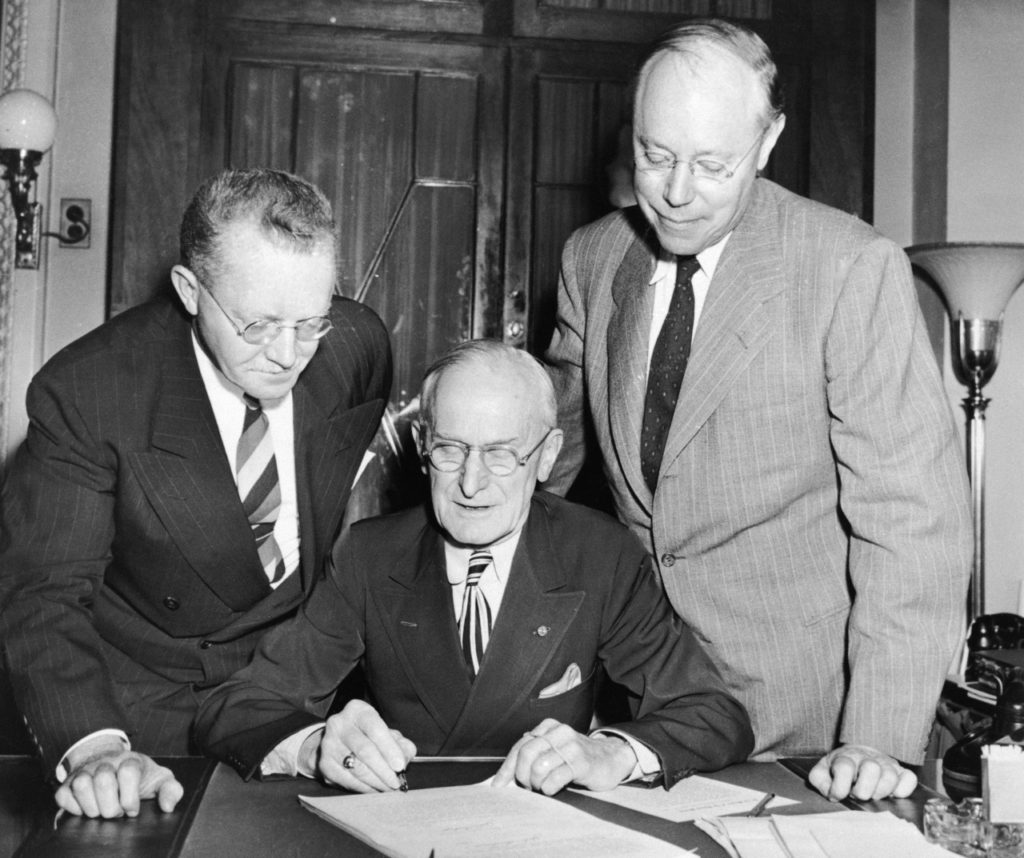
Carl Loeffler, center, Secretary of the Senate, certifies Senate passage over the presidential veto of the Taft-Hartley Labor Union Curbing Bill, June 23, 1947, Washington, D.C. Looking on are the bill’s co-authors, Rep. Fred Hartley, left, and Sen. Robert Taft. (AP Photo)
To be sure, in the short run, it looked like a bad wager. Congress overrode Truman’s veto of Taft-Hartley by a wide margin; the vote in the Senate was 68–25, and in the House, 331–83. Moreover, as the lopsided numbers suggest, many Democrats joined in the override, including a young up-and-comer from Texas, Lyndon B. Johnson.
To most observers, the outlook was dim for Truman. The next presidential election was less than a year-and-a-half away, and he had just been crushed on a major issue.
So what did he do? He rallied his forces, starting with labor. He used his bully pulpit to make his case—and the case for labor—to the country.
Of course, Truman had allies, and he made the most of them: At the time of the Taft-Hartley vote, the left-wing Nation magazine cheered for Truman’s fortitude: “The President’s veto of the labor bill has drawn a sharp issue at a point where it should be drawn. … Now the fight begins, and it will carry on until the votes are counted in ’48.”
In fact, the Taft-Hartley vote notwithstanding, most Americans were still at least somewhat supportive of unions. Another rising star in the Democrat Party, Rep. John F. Kennedy of Massachusetts, spoke for workers when he denounced Taft-Hartley as “a calculated and systematic attempt to destroy the power of labor to bargain equally at the bargaining table.”
In these allied voices, we can see support for Truman’s guiding insight: Yes, he had lost the battle, but he didn’t have to lose the war. After all, not only had the unions not gone anywhere, but in the wake of Taft-Hartley, they were eagerly looking for a champion to save them from the Republicans. Enter Truman.
Much of the strategy was outlined in a memorandum from White House advisers Clark Clifford and James Rowe, dated November 19, 1947. The memo was urgent in tone: Democrats had to rally their team. As the memo put it:
The rank and file are not yet politically minded; they will not, therefore, vote or work actively unless they are inspired to do so. They were so inspired by Roosevelt. They were not so inspired in the 1946 Congressional elections.
Thus we can see Truman’s mission: inspire. Democrat voters had been napping in 1946, and so Truman would have to wake them up in 1948.
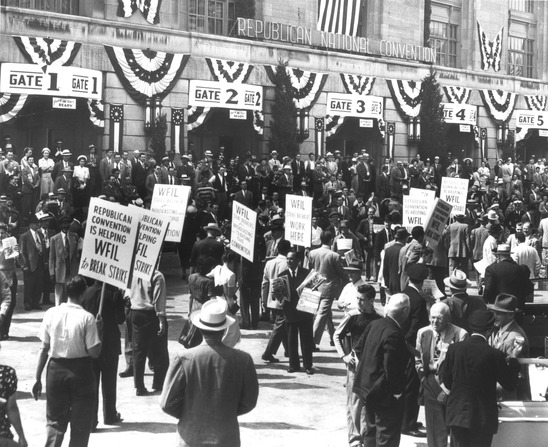
Strike of television workers during Republican Convention in Philadelphia, June 21, 1948. (Harry S. Truman Library)
Yet here we might pause to note that the 44-page memo was about more than just labor; it was also about mobilizing the whole of the Democrat coalition, including farmers and minorities. The math was clear: Truman needed labor, for sure, but he also needed more than labor. And so even if the focus was on labor, the 1948 campaign was based on other issues, too; in fact, the administration focused itself on generating policies—including, for example, civil rights progress to attract the black vote—that inspired each part of the coalition. In other words, administration-wide, there was command-focused leadership, as well as disciplined followership. The whole agenda, in fact, had an encompassing name, building on the New Deal: Truman called it the Fair Deal.
Truman’s 1948 campaign is remembered for its “give ’em hell” tone, and yet it should also be remembered that the president was not just ranting but, rather, clear-channeling. For instance, in his July 15 acceptance speech to the Philadelphia national convention, he got down to specifics:
In the field of labor we needed moderate legislation to promote labor-management harmony, but Congress passed instead that so-called Taft-Hartley Act, which has disrupted labor- management relations and will cause strife and bitterness for years to come if it is not repealed, as the Democratic platform says it ought to be repealed.
And he had much more to say to labor, as well:
On the Labor Department, the Republican platform of 1944 said, if they were in power, that they would build up a strong Labor Department. They have simply torn it up. Only one bureau is left that is functioning, and they cut the appropriation of that so it can hardly function.
Moreover, Truman called attention to those workers who were not in unions, but could still benefit from federal action—and blamed Republicans for inaction. “I recommended an increase in the minimum wage,” he said. “What did I get? Nothing. Absolutely nothing.”
After hearing Truman’s speech, union men and union maids knew that the president was on their side. And so in the fall campaign, labor launched a furious effort on his behalf, plastering workplaces across the nation with pamphlets and handbills.
Indeed, Truman’s support from labor was so strong that he powered past not only the Republican nominee, Thomas E. Dewey, but also past two other fringe rivals, Henry Wallace and Strom Thurmond—both of whom took votes away from Truman. Yet even so, Truman beat Dewey by 4.5 percentage points in the popular vote. Moreover, in the down-ballot voting, the Democrats recaptured both houses of Congress; Rep. Hartley was among the Republicans replaced by a Democrat.
1948’s Lessons for 2020
The point here is not to argue the merits of labor issues, then or now. Instead, it’s to point out that political mobilization must be done with not only single-mindedness, but also with astuteness.
Back in 1947, Truman could see that Big Labor had more latent power than most observers realized. Yes, labor had lost the Taft-Hartley battle, but it still had plenty of mojo to help win a war. So acting with shrewdness, Truman made himself their commanding general. And having taken command, he led his troops to victory the following year.
Thus the lesson: If Trump thinks he’s right on immigration, border security—and, yes, the wall—then he has to apply himself to that cause every day. As in, every single day. Tactical flexibility is always valuable, but strategic certainty is indispensable.
There are signs that the White House sees the situation in these terms. As acting chief of staff Mick Mulvaney said of Trump on Fox News on Sunday morning, “Ultimately he’ll be judged by what happens at the end of this process, not by what happened this week.” That’s the right vision: eyes on the prize—the long-term prize. And so just as Truman bounced back from his defeat in June 1947, so Trump can bounce back from his defeat of January 2019.
Or as the president himself tweeted on January 27:
We are not even into February and the cost of illegal immigration so far this year is $18,959,495,168. Cost Friday was $603,331,392. There are at least 25,772,342 illegal aliens, not the 11,000,000 that have been reported for years, in our Country. So ridiculous! DHS
— Donald J. Trump (@realDonaldTrump) January 27, 2019
If Trump continues to focus on the immigration issue, with this much clarity and specificity, for the next two years, then the political environment will change. That is, if he uses his presidential bully pulpit to make his security-minded arguments, over and over again, he’ll get his message across–and that’s why the Democrats, for their part, will try so hard to distract him.
As with Truman’s veto of Taft-Hartley, the shutdown was not successful. And yet the shutdown was a battle, not the war. (In the meantime, of course, new battles–and new opportunities–present themselves; for instance, the Democrats’ new romance with higher taxes and abortion-at-birth puts offers new energy, not only to Trump, but also to Republicans everywhere. And as for those old yearbooks that have bedeviled Virginia’s Democratic governor, Ralph Northam, the revelations are a reminder: in politics, as in life, one never knows all of what’s coming next. )
Yet still, for Trump himself, the biggest single issue in 2020 is likely to be immigration. That is, going back to the 2016 campaign, he has made it his signature issue, and so now he owns it. And so it’s on immigration that his re-election campaign will likely succeed–or fail.
So now Trump, having presumably learned hard lessons from the shutdown, needs a new and better strategy for winning the larger war. And if the war is to be won, it will be won with a larger and more inclusive vision of border security, homeland security, national sovereignty, and domestic solidarity.
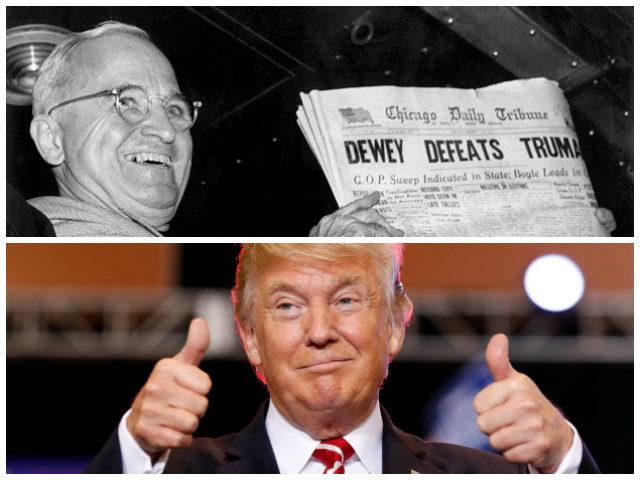
COMMENTS
Please let us know if you're having issues with commenting.